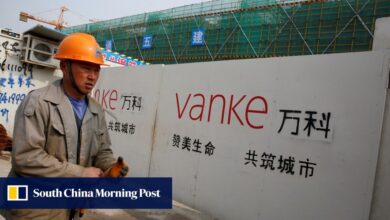Trilateral meeting of Presidents of Uzbekistan, Tajikistan and Kyrgyzstan in Khujand

KHUJAND: On March 31, in the city of Khujand, the President of the Republic of Uzbekistan, Shavkat Mirziyoyev, took part in a trilateral meeting with the President of the Republic of Tajikistan, Emomali Rahmon, and the President of the Kyrgyz Republic, Sadyr Japarov.
The heads of state exchanged congratulations on the occasion of the sacred holiday of Ramadan Hayit – Eid al-Fitr and the spring celebration of Navruz, wishing peace, prosperity, and well-being to the brotherly peoples.
President Shavkat Mirziyoyev also extended heartfelt congratulations to the Tajik and Kyrgyz sides on the final resolution of all issues and the signing of the Treaty on the Delimitation of the State Border.
It was emphasized that this document, along with the Treaty on the Junction Point of the State Borders of the three countries, will contribute to ensuring stability, sustainable development and enhancing the international standing of the entire region. The newly unveiled Friendship Monument will serve as a new symbol of strengthening good neighborly relations, mutual trust, and strategic partnership among the brotherly nations.
The President of Uzbekistan also highlighted key priorities for practical interaction.
Above all, this is maintaining active and trust-based contacts at the highest level.
This week, Samarkand will host the first “Central Asia – European Union” Summit and the Climate Forum, dedicated to addressing common environmental challenges in the region.
In May, a summit with the Gulf Arab states is scheduled, followed by the seventh Consultative Meeting of the Heads of State of Central Asia in September.
In this context, the importance of maintaining regular consultations between the foreign ministries was emphasized to thoroughly prepare the agendas of upcoming events and develop coordinated approaches.
Particular attention was given to fostering close cooperation between border regions.
It was noted that in recent years, Uzbekistan’s trade with Kyrgyzstan and Tajikistan has increased severalfold, with nearly half of the trade volume attributed to border areas.
In this regard, the need was highlighted for comprehensive modernization and expansion of border customs checkpoints, as well as the development of convenient, modern trade and logistics infrastructure.
A proposal was made to explore the establishment of a trilateral trade platform, including the organization of a permanent exhibition and fair for industrial and agricultural products.
Another key area is industrial cooperation projects.
Uzbekistan enterprises and private companies are actively investing in the development of modern production facilities in neighboring countries.
To support such cooperation, the President of Uzbekistan expressed readiness to increase the capital of the established joint investment funds gradually.
It was agreed to continue efforts to enhance transport connectivity among the countries. This includes increasing the frequency and expanding the geography of air routes, as well as launching new intercity bus routes in border regions.
Attention is also being given to advancing major regional projects in green energy and transport, along with joint programs related to water resources and environmental protection.
The President of Uzbekistan, Shavkat Mirziyoyev, emphasized that more proactive government efforts in the economic sphere must yield swift and tangible results aimed at enhancing the well-being of the region’s people.
It was noted that the cultural and humanitarian events currently taking place in Khujand contribute to strengthening friendship and mutual understanding among the peoples of the region, especially among the youth.
The President of Uzbekistan proposed holding joint concerts and friendship festivals annually in border regions during the celebration of Navruz and expressed readiness to host such events next year in the city of Fergana.
Following the meeting, a historic Treaty on the Junction Point of the State Borders of Uzbekistan, Tajikistan, and Kyrgyzstan was signed, and a Joint Declaration of the three heads of state was adopted.
* * * * * * *
As part of the high-level events taking place in the city of Khujand, the President of the Republic of Uzbekistan, Shavkat Mirziyoyev, the President of the Republic of Tajikistan, Emomali Rahmon, and the President of the Kyrgyz Republic Sadyr Japarov formally inaugurated the Friendship Monument at the junction point of the state borders of the three countries.
Deputy Prime Ministers of the three nations, via videoconference, reported to the leaders on the completion of construction works and the readiness of the site.
It is worth noting that this monument is intended to serve as a new symbol of strengthening friendship, good neighborliness, mutual trust, and strategic partnership among the brotherly nations.
* * * * * * *
As part of the cultural program of the summit in the city of Khujand, the heads of state of Uzbekistan, Tajikistan, and Kyrgyzstan visited the Khujand Fortress and got acquainted with its historical significance.
It is worth noting that the construction of this unique complex dates back to the 6th-5th centuries BCE. Archaeological excavations have confirmed that the first fortress was built during that period.
Following its reconstruction in 1999, a regional history museum was opened adjacent to the fortress, now housing over 28,000 exhibits.
During the most recent restoration, the fortress walls, citadel, and gates were rebuilt. An administrative building and artisan shops were constructed, and replicas of traditional Khujand courtyards were created.
A complex featuring five exhibition halls dedicated to the history and culture of the Tajik people was also established on the site. In eight artisan courtyards, artisans engage in calligraphy, painting, the production of adras and suzani, stone carving, blacksmithing, and pottery.
The leaders viewed an exhibition showcasing traditional crafts, agricultural products, and national cuisine from the three countries and attended performances of traditional cultural presentations.
* * * * * * *
The President of the Republic of Uzbekistan, Shavkat Mirziyoyev, the President of the Republic of Tajikistan, Emomali Rahmon, and the President of the Kyrgyz Republic, Sadyr Japarov, participated in a joint event – a concert featuring masters of culture and art from the three countries.
In his welcoming remarks, the President of Uzbekistan warmly congratulated the brotherly peoples on the occasion of Navruz, the holiday of spring renewal, and the holy celebration of Ramadan Hayit – Eid al-Fitr.
“Today is truly a great and long-awaited celebration for our people. We have signed a historic Treaty on the Junction Point of the State Borders of our three countries. From now on, borders will be lines of brotherhood – spaces of new opportunities, creativity, and integration”, the President stated.
It was emphasized that our peoples share one sacred land, one faith, one destiny, as well as common concerns, joys, and aspirations. We must now work together to transform this beautiful land into a dignified and prosperous life for both current and future generations.
In recent years, thanks to a shared political will, relations between our countries have undergone significant positive changes.
Today, the Treaty on Allied Relations between Uzbekistan and Tajikistan has officially entered into force. A similar agreement between Uzbekistan and Kyrgyzstan is expected to be signed in the near future.
There has been dynamic growth in trade, investment, freight transportation, and mutual travel by citizens. The number of successful cooperation initiatives continues to increase.
It was noted that during today’s talks, agreements were reached on creating favorable conditions for business and cultural exchanges, increasing the frequency of direct flights, and launching new bus routes between cities in the border regions.
Special attention was given to the regular organization of cultural events, creative festivals, youth forums, and sports competitions.
“Art knows no borders – its great mission is to unite people. And today’s concert, featuring talented masters of the arts from our three countries, will once again showcase the richness, diversity, and shared heritage of our cultures”, concluded the President of Uzbekistan.
Source link



